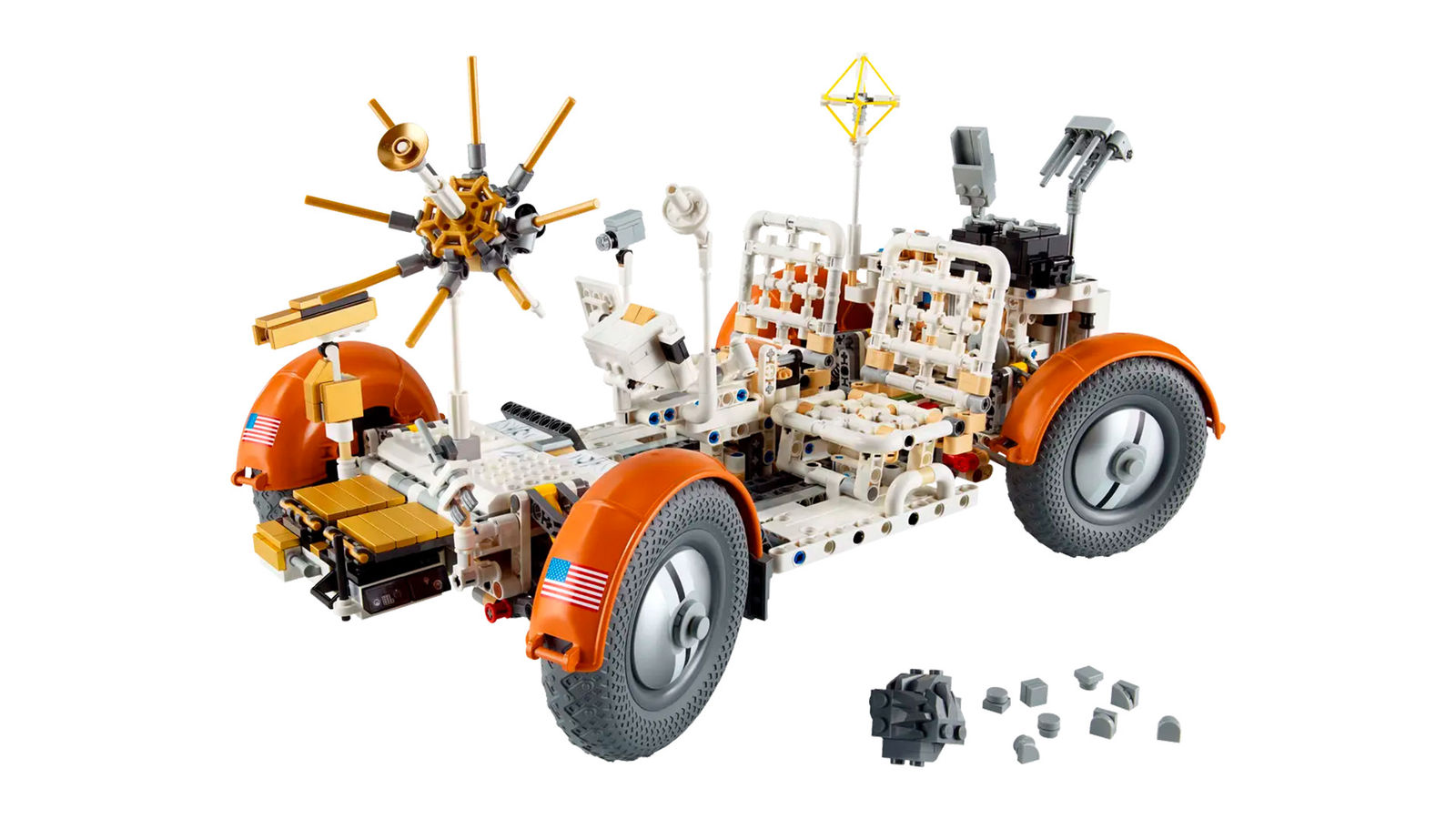Lego Releases Apollo Lunar Rover Model
The Lego Technic NASA Apollo Lunar Roving Vehicle—LRV set is a detailed 1:8 scale model of the original moon buggy used by NASA’s last three Apollo crews. Comprising 1,913 pieces, this set follows Lego’s earlier releases of the Saturn V rocket and Apollo 11 lunar module. The new Lego set will be available in stores on August 1.
According to Lego’s website, “Embark on a journey to the moon with this detailed Lego Technic NASA model set for adults. The set includes a displayable model version of the lunar rover module carried by Apollo 17, plus three attachable equipment sets.” This set is full of authentic details.
NASA’s efforts to extend the distance that astronauts could traverse on the moon led to the development of the Apollo Lunar Roving Vehicle (LRV). The solution was a motorized vehicle, which Boeing developed in collaboration with GM and Goodyear. The LRV enabled Apollo 17 astronauts Gene Cernan and Harrison Schmitt to venture as far as 4.7 miles from their lunar module, limited only by the distance they could walk back in case of a rover malfunction.
Each wheel of the LRV was powered by its own electric motor. There were four 0.25-hp (200-w) series-wound DC motors, one for each wheel. These motors provided the necessary torque and power to navigate the uneven and rocky lunar surface. Each wheel motor was connected to a harmonic drive gearbox. This type of gearbox offered a high reduction ratio in a compact and lightweight design, which was essential for the weight constraints of lunar missions. The harmonic drive provided precise control and high torque, necessary for overcoming the moon’s rugged terrain.
Like the real lunar rover, which needed to fit inside the descent stage of the lunar module, the Lego model’s three sections can be removed so that the main chassis can be folded. When stowed, the full-size LRV was just over half its deployed length of 10 ft. The Lego rover can be steered using the same T-shaped hand controller as the original, and it features a suspension system to navigate the rough lunar terrain. Although the Lego model is hand-powered, it is detailed to include the rover’s heating and cooling elements, batteries, and other intricate features.
The Lego LRV set also includes pieces specific to at least two of the missions that used the rover. Among the model’s features is a collection of moon rocks, including one significantly larger rock representing “Big Muley”—the largest sample brought back by Apollo 16 astronauts John Young and Charlie Duke. The set also includes the Traverse Gravimeter Experiment, which measured the moon’s geological structure as astronauts Eugene Cernan and Harrison Schmitt drove around Taurus-Littrow. Additionally, the map mounted to the LCRU details the actual paths that the Apollo 17 LRV traversed on its three drives. However, the set does not include a way to convert the map into a makeshift replacement fender, as Cernan and Schmitt had to do on their second outing.






